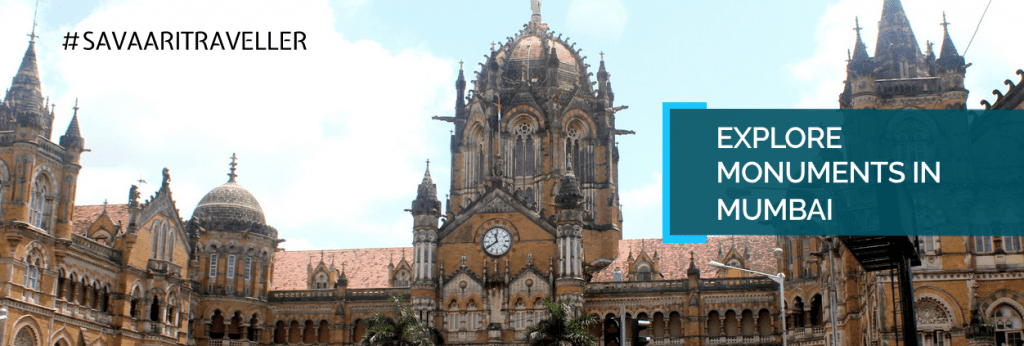
Mumbai’s hidden history: 8 lesser-known places of heritage
It won’t be of any surprise to a traveler to know in advance how historic the city of Mumbai is. Being a major trade route since its foundation, the city has served and remained as a business capital and an important commercial center. From the Mughals to the Marathas and Portuguese, from Jews and Iranians to the British, erstwhile Bombay went through a roller coaster ride of discovery, political upheaval, battles, and war. Amidst the battle for power, the rulers left behind traces of their influence on the city in the form of monuments and historic structures. But not all of them see the light of discovery or the limelight of media and remain obscure behind the burgeoning concrete facades of the 21st century. For those who love to unravel the hidden gems of history, here are a few places you must visit.
8 lesser known places of historical places that add to Mumbai’s glorious past:
Vasai Fort, Vasai
Known as the Bassein Fort, this historical fortress was once built by the Portuguese rulers when they dominated the seven islands of Mumbai. Earlier a stronghold of their army, this fort saw a change of hands over centuries. Now protected by the Archeological Survey of India, the Vasai Fort, though in ruins, still holds historic and cultural significance for Mumbai.
Mahakali Caves, Andheri East
Within the bustling western suburbs of Andheri, this cluster of ancient caves. Also called Kondivite Caves, the Mahakali Caves are one of the oldest rock-cut Buddhist monasteries of Mumbai. Eroded by time and nature, these caves still have teachings of Buddhism in pali inscriptions and carvings of Buddha. This is one of the first sites of Buddhism in the region.
Arnala Fort, Vasai
Off the shores of Vasai, there is an old island where the Arnala Fort stands. This fort was built and owned by the Portuguese as a vantage point of the surrounding sea. The fort annexes an octagonal water reservoir and tombs of the Portuguese rulers. The neighboring Arnala beach is an important tourist spot today.
Kanhoji Angre Island, Mumbai Harbor
Away from the southern coast of Mumbai, in the middle of the Arabian Sea, you’ll find this historic isle. Yet another Portuguese ruled area, the Kanoji Angre Island is dominated by a fort built in the 17th century. Though built by the Portuguese army, it was later held as a base by the Maratha navy. Named after the Navy Chief Conajee Angria or Sarkhel Angre, this island has a fully functional lighthouse and relics of old canons. The lighthouse was built by the British in 1867.
Kanheri Caves, Borivali
Tucked away in the middle of the Sanjay Gandhi (Borivali) National Park, you will find a basalt structure of ancient rock-cut caves. Known as the Kanheri Caves, these caves and the annexed edifices were ancient Buddhist monasteries and temples. The name of these caves comes from the Sanskrit word Krishnagiri, translated as a black mountain. This massive assembly of 109 caves contains Buddhist scriptures, paintings, relief carvings and pali inscriptions, dating back to 1st century BCE.
[Also read: Places to visit near Mumbai by road]
Prince of Wales Museum, Fort
Also known as Chhatrapati Shivaji Maharaj Vastu Sangrahalaya, this is the main museum of the city of Mumbai. Built in 1922, this sprawling house of history reflect an Indo-Saracenic style of architecture, along with influences from Mughal, Maratha, and Jain art. Flanked by manicured gardens and lines of palm trees, the Prince of Wales Museum is indeed an architectural masterpiece on its own. The museum houses more than 50000 exhibits of ancient India, as well as artifacts and collectibles from different countries.
Japanese Graveyard and temples, Worli
When people say Mumbai is a conglomeration of cultures, it indeed is. Apart from its European rulers, the city has also given shelter to people from different countries and communities. Owing to such a cosmopolitan culture, Mumbai once housed a widespread Japanese community. Traders, travelers, artists and geishas, the historical Japanese community of Mumbai found a home here. In Worli, the Japanese graveyard preserves their memories and ashes of those long gone. Almost decrepit, this cemetery is one of the most beautiful graveyards in town and renders a surreal feel. The temples, though in ruins, still find a place in nooks and crannies of Worli.
Hidden Railway Museum
Of course every Mumbai visitor or resident knows about the Chhatrapati Shivaji Terminus or formerly, the Victoria Terminus Railway Station in the heart of South Mumbai. But little does one know of the Railway Museum that it houses. A major railway junction for local and interstate train routes, this terminus was also initially called the Great Indian Peninsula Railway. Hidden away in the administrative building of CST Station, the museum is dedicated to the original Great Indian Peninsular Railway and architect FW Stevens, who designed the building. If you love a good dose of historical information, do go through the old train models, stained glass paintings, miniatures, and other ancient railway paraphernalia.
